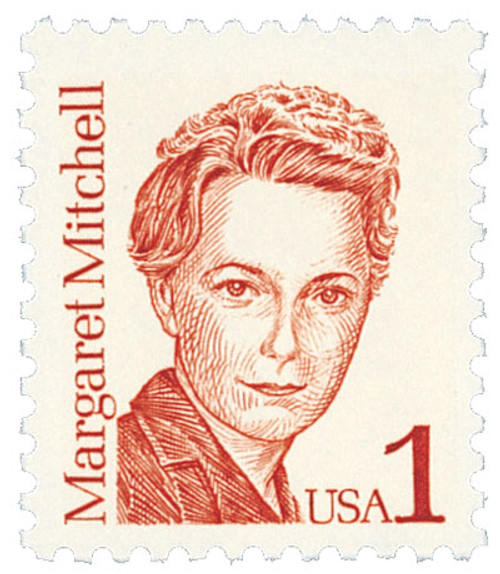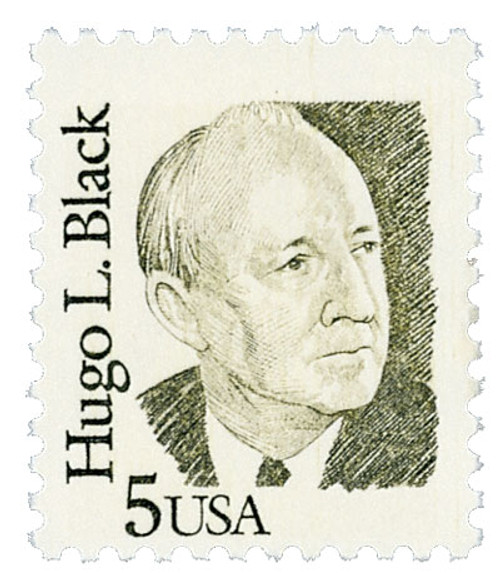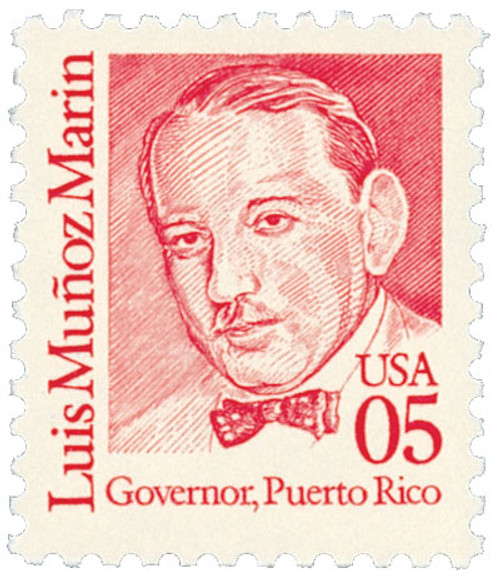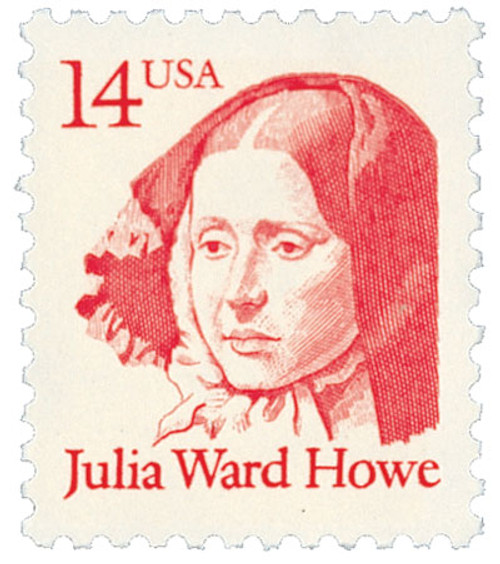
# 2181 FDC - 1988 23c Great Americans: Mary Cassatt
U.S. #2181
1988 23¢ Mary Cassatt
Great Americans
- First-ever 23¢ US stamp
- Cassatt is considered one of America’s greatest female artists
Stamp Category: Definitive
Series: Great Americans
Value: 23¢, paid the second-ounce rate for international surface mail
First Day of Issue: November 4, 1988
First Day City: Philadelphia, Pennsylvania
Quantity Issued: 48,780,000
Printed by: Bureau of Engraving and Printing
Printing Method: Engraved
Format: Panes of 100 in sheets of 800
Perforations: 11.2 x 11.1
Color: Purple
Why the stamp was issued: This stamp paid the second-ounce rate for international surface mail that went into effect on April 3, 1988.
About the stamp design: Work on the Cassatt stamp began in 1983. Dennis Lyall produced a number of sketches, including several of Cassatt as a young woman, but he was unhappy with them. He ultimately based his stamp portrait on a 1914 photo by Armand Delaporte of Cassatt at age 70 taken at Villa Angeletto, where she lived in France. Show wearing an elegant feathered hat, the photo came from the Archives of American Art at the Smithsonian Institution.
First Day City: The First Day ceremony for this stamp was held at the Pennsylvania Academy of Fine Arts in Philadelphia, where Cassatt first formally studied art.
Unusual fact about this stamp: Unlike most of the other honorees in the Great Americans Series, Cassatt had been featured on a stamp before, the 1966 stamp depicting her 1893 painting, The Boating Party, US #1322. Up to this point, the only other two people in the series that had already been featured on stamps were Harry Truman and John James. Audubon. Cassatt was later featured on the 1998 Four Centuries of American sheet (US #3236) and with a set of four 2003 stamps in the American Treasures Series (US #3804-07).
About the Great Americans Series: The Great Americans Series was created to replace the Americana Series. The new series would be characterized by a standard definitive size, simple design, and monochromatic colors.
This simple design included a portrait, “USA,” the denomination, the person’s name, and in some cases, their occupation or reason for recognition. The first stamp in the new series was issued on December 27, 1980. It honored Sequoyah and fulfilled the new international postcard rate that would go into effect in January 1981.
The Great Americans Series would honor a wider range of people than the previous Prominent Americans and Liberty Series. While those series mainly honored presidents and politicians, the Great Americans Series featured people from many fields and ethnicities. They were individuals who were leaders in education, the military, literature, the arts, and human and civil rights. Plus, while the previous series only honored a few women, the Great Americans featured 15 women. This was also the first definitive series to honor Native Americans, with five stamps.
The Bureau of Engraving and Printing (BEP) produced most of the stamps, but private firms printed some. Several stamps saw multiple printings. The result was many different varieties, with tagging being the key to understanding them. Though there were also differences in perforations, gum, paper, and ink color.
The final stamp in the series was issued on July 17, 1999, honoring Justin S. Morrill. Spanning 20 years, the Great Americans was the longest-running US definitive series. It was also the largest series of face-different stamps, with a total of 63.
Click here for all the individual stamps and click here for the complete series.
History the stamp represents: Artist Mary Stevenson Cassatt was born on May 22, 1844, in Allegheny City (present-day Pittsburgh), Pennsylvania.
Cassatt was one of seven children born into an upper-middle-class family. They moved to Lancaster, Pennsylvania and later Philadelphia, where Cassatt first attended school at the age of six.
Cassatt’s family encouraged world travel, so she spent five years in Europe, visiting London, Paris, and Berlin, among other places. She had some of her first art and music lessons there, which set her on the course to become an artist. While her family didn’t like the idea of her becoming an artist, she attended the Pennsylvania Academy of Fine Arts when she was 15.
Cassatt remained at the school until 1865. She was unhappy with her education there – the pace was too slow for her and she found the male students to be patronizing. Although her father opposed it, Cassatt moved to Paris in 1866. At the time, women were unable to attend the École des Beaux-Arts, so Cassatt received private lessons from Jean-Léon Gérôme. She also spent a good deal of time at the Louvre copying the famous paintings there, as was often done by women in Paris at the time.
Cassatt eventually started studying under Charles Joshua Chaplin and Thomas Couture. In 1868, the jury at the Paris Salon selected her painting A Mandoline Player. She was one of the first two women to exhibit her work at the Salon.
Cassatt returned to the US 1870 but was frustrated. She placed some of her work on display in a New York gallery, but it didn’t sell. She was also saddened by the lack of paintings to study. She considered giving up painting, but moved to Chicago in search of new opportunities. There she met a man who hired her to paint copies of two paintings by Correggio in Italy. He gave her the money she needed to return to Europe, which made her very happy.
Things improved for Cassatt once she moved to Italy. Her painting, Two Women Throwing Flowers During Carnival was very popular at the Salon, earning her significant attention. After she completed her commissions, she went to Madrid and Seville to paint Spanish subjects. In 1874, she returned to France and opened a studio in Paris. However, she grew frustrated with the Salon, finding that it too often dismissed the work of female artists.
It was around this time that Edgar Degas invited Cassatt to display some of her work in a show put on by Impressionist painters. Cassatt had great respect for Degas and said his art changed her life, so she was thrilled to join them. Cassatt found new inspiration painting in this style, carrying her sketchbook everywhere she went. The Impressionist shows did well, but they also faced significant criticism.
In 1886, Cassatt had two paintings in the first Impressionist exhibit in the US. Around that same time, however, she began to move away from that style to a more straightforward one. She no longer identified herself with a specific art movement and enjoyed experimenting with several different techniques.
In 1891, Cassatt was hired to paint a 12-foot by 58-foot mural for the Women’s Building at the 1893 World’s Columbian Exposition. Unfortunately, the massive mural was lost after the expo ended when the building was torn down.
After around 1900, most of Cassatt’s paintings focused on mothers and children. She had two paintings on display at the famed 1913 Armory show, which both depicted mothers and children. Cassatt suffered from several health issues that left her nearly blind, forcing her to stop painting in 1914. She died on June 14, 1926. Among the honors bestowed on her since her death are a WWII Liberty ship and induction into the National Women’s Hall of Fame.
U.S. #2181
1988 23¢ Mary Cassatt
Great Americans
- First-ever 23¢ US stamp
- Cassatt is considered one of America’s greatest female artists
Stamp Category: Definitive
Series: Great Americans
Value: 23¢, paid the second-ounce rate for international surface mail
First Day of Issue: November 4, 1988
First Day City: Philadelphia, Pennsylvania
Quantity Issued: 48,780,000
Printed by: Bureau of Engraving and Printing
Printing Method: Engraved
Format: Panes of 100 in sheets of 800
Perforations: 11.2 x 11.1
Color: Purple
Why the stamp was issued: This stamp paid the second-ounce rate for international surface mail that went into effect on April 3, 1988.
About the stamp design: Work on the Cassatt stamp began in 1983. Dennis Lyall produced a number of sketches, including several of Cassatt as a young woman, but he was unhappy with them. He ultimately based his stamp portrait on a 1914 photo by Armand Delaporte of Cassatt at age 70 taken at Villa Angeletto, where she lived in France. Show wearing an elegant feathered hat, the photo came from the Archives of American Art at the Smithsonian Institution.
First Day City: The First Day ceremony for this stamp was held at the Pennsylvania Academy of Fine Arts in Philadelphia, where Cassatt first formally studied art.
Unusual fact about this stamp: Unlike most of the other honorees in the Great Americans Series, Cassatt had been featured on a stamp before, the 1966 stamp depicting her 1893 painting, The Boating Party, US #1322. Up to this point, the only other two people in the series that had already been featured on stamps were Harry Truman and John James. Audubon. Cassatt was later featured on the 1998 Four Centuries of American sheet (US #3236) and with a set of four 2003 stamps in the American Treasures Series (US #3804-07).
About the Great Americans Series: The Great Americans Series was created to replace the Americana Series. The new series would be characterized by a standard definitive size, simple design, and monochromatic colors.
This simple design included a portrait, “USA,” the denomination, the person’s name, and in some cases, their occupation or reason for recognition. The first stamp in the new series was issued on December 27, 1980. It honored Sequoyah and fulfilled the new international postcard rate that would go into effect in January 1981.
The Great Americans Series would honor a wider range of people than the previous Prominent Americans and Liberty Series. While those series mainly honored presidents and politicians, the Great Americans Series featured people from many fields and ethnicities. They were individuals who were leaders in education, the military, literature, the arts, and human and civil rights. Plus, while the previous series only honored a few women, the Great Americans featured 15 women. This was also the first definitive series to honor Native Americans, with five stamps.
The Bureau of Engraving and Printing (BEP) produced most of the stamps, but private firms printed some. Several stamps saw multiple printings. The result was many different varieties, with tagging being the key to understanding them. Though there were also differences in perforations, gum, paper, and ink color.
The final stamp in the series was issued on July 17, 1999, honoring Justin S. Morrill. Spanning 20 years, the Great Americans was the longest-running US definitive series. It was also the largest series of face-different stamps, with a total of 63.
Click here for all the individual stamps and click here for the complete series.
History the stamp represents: Artist Mary Stevenson Cassatt was born on May 22, 1844, in Allegheny City (present-day Pittsburgh), Pennsylvania.
Cassatt was one of seven children born into an upper-middle-class family. They moved to Lancaster, Pennsylvania and later Philadelphia, where Cassatt first attended school at the age of six.
Cassatt’s family encouraged world travel, so she spent five years in Europe, visiting London, Paris, and Berlin, among other places. She had some of her first art and music lessons there, which set her on the course to become an artist. While her family didn’t like the idea of her becoming an artist, she attended the Pennsylvania Academy of Fine Arts when she was 15.
Cassatt remained at the school until 1865. She was unhappy with her education there – the pace was too slow for her and she found the male students to be patronizing. Although her father opposed it, Cassatt moved to Paris in 1866. At the time, women were unable to attend the École des Beaux-Arts, so Cassatt received private lessons from Jean-Léon Gérôme. She also spent a good deal of time at the Louvre copying the famous paintings there, as was often done by women in Paris at the time.
Cassatt eventually started studying under Charles Joshua Chaplin and Thomas Couture. In 1868, the jury at the Paris Salon selected her painting A Mandoline Player. She was one of the first two women to exhibit her work at the Salon.
Cassatt returned to the US 1870 but was frustrated. She placed some of her work on display in a New York gallery, but it didn’t sell. She was also saddened by the lack of paintings to study. She considered giving up painting, but moved to Chicago in search of new opportunities. There she met a man who hired her to paint copies of two paintings by Correggio in Italy. He gave her the money she needed to return to Europe, which made her very happy.
Things improved for Cassatt once she moved to Italy. Her painting, Two Women Throwing Flowers During Carnival was very popular at the Salon, earning her significant attention. After she completed her commissions, she went to Madrid and Seville to paint Spanish subjects. In 1874, she returned to France and opened a studio in Paris. However, she grew frustrated with the Salon, finding that it too often dismissed the work of female artists.
It was around this time that Edgar Degas invited Cassatt to display some of her work in a show put on by Impressionist painters. Cassatt had great respect for Degas and said his art changed her life, so she was thrilled to join them. Cassatt found new inspiration painting in this style, carrying her sketchbook everywhere she went. The Impressionist shows did well, but they also faced significant criticism.
In 1886, Cassatt had two paintings in the first Impressionist exhibit in the US. Around that same time, however, she began to move away from that style to a more straightforward one. She no longer identified herself with a specific art movement and enjoyed experimenting with several different techniques.
In 1891, Cassatt was hired to paint a 12-foot by 58-foot mural for the Women’s Building at the 1893 World’s Columbian Exposition. Unfortunately, the massive mural was lost after the expo ended when the building was torn down.
After around 1900, most of Cassatt’s paintings focused on mothers and children. She had two paintings on display at the famed 1913 Armory show, which both depicted mothers and children. Cassatt suffered from several health issues that left her nearly blind, forcing her to stop painting in 1914. She died on June 14, 1926. Among the honors bestowed on her since her death are a WWII Liberty ship and induction into the National Women’s Hall of Fame.


















